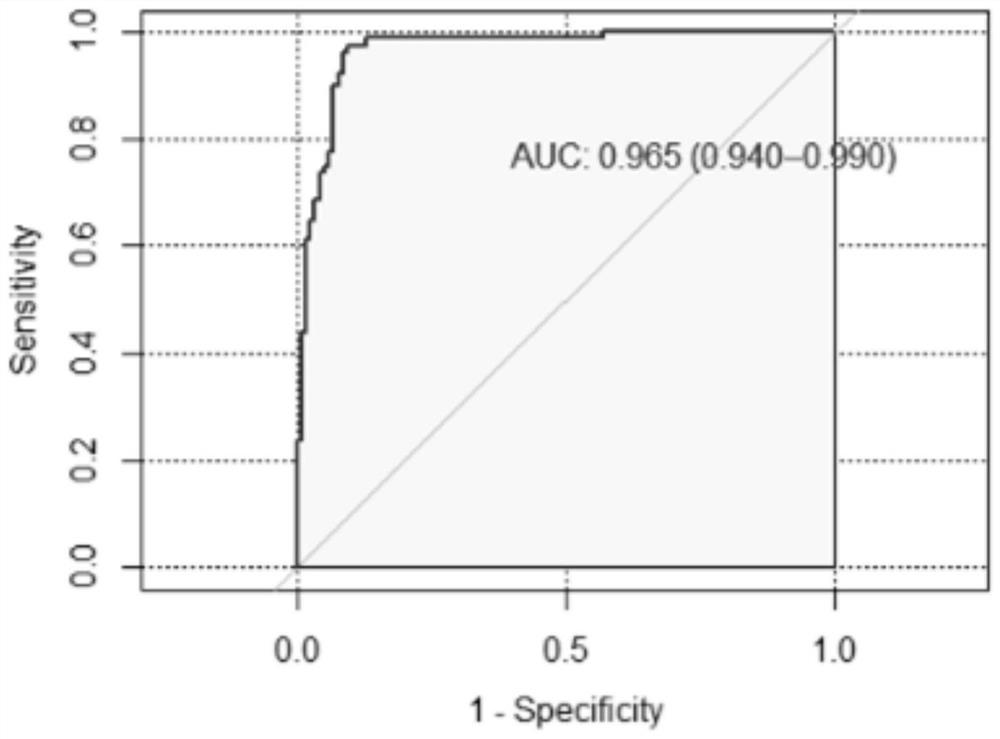Molecular marker related to azoospermia in semen as well as detection method and application of molecular marker
A technique for molecular markers and azoospermia, which is applied in the fields of analytical chemistry and clinical medicine, can solve problems that have not received corresponding attention, and achieve the effects of preventing disease progression, accurate quantification, and delaying disease progression
- Summary
- Abstract
- Description
- Claims
- Application Information
AI Technical Summary
Problems solved by technology
Method used
Image
Examples
Embodiment 1
[0073] Embodiment 1 Research Object Selection and Grouping Basis
[0074] The subjects of this part of the study were first-diagnosed azoospermia cases and normal controls with normal semen parameters from the Affiliated Hospital of Nanjing Medical University and the Reproductive Medicine Center of the Sixth Affiliated Hospital of Sun Yat-sen University. The research content and the informed consent form were approved by the Ethics Committee of Nanjing Medical University and complied with the requirements of relevant laws and regulations. The cases and controls signed the informed consent form after understanding the contents. All the research subjects underwent a complete physical examination and completed a report that included personal basic information, living habits, occupational and environmental exposures, genetic risk factors, sexual function and reproduction. Questionnaires on function, disease history, and physical activity. Specific sample classification criteria a...
Embodiment 2
[0089] Example 2 UPLC-MS metabolomics screening of azoospermia 1,3-dihydroxypropan-2-yl 13-methyltetradecanoic acid
[0090] 1. Sample pretreatment
[0091] 1.1. Take 10 μL of semen, add 10 μL of internal standard A, add 10 μL of internal standard B, add 10 μL of internal standard C, add 40 μL of methanol (reagent A), vortex for 30 seconds, and precipitate protein.
[0092] 1.2. Centrifuge at 16000g at 4°C for 15min in a centrifuge, transfer the supernatant to a 1.5mL imported EP tube, and concentrate the supernatant to dryness in a centrifugal concentrator at room temperature.
[0093] 1.3. Reconstitute with 10 μL of ultrapure water (reagent D) and wait for analysis.
[0094] 2. Instrument testing
[0095] 2.1. Analytical instruments: UPLC Ultimate 3000system (Dionex) high-performance liquid chromatography; Q-Exactive high-resolution mass spectrometer.
[0096] 2.2. Liquid phase conditions:
[0097] 2.2.1 The liquid chromatographic column is a Hypersil GOLD C18 chromatogr...
Embodiment 3
[0108] Example 3 Diagnosis of azoospermia by 1,3-dihydroxypropan-2-yl 13-methyltetradecanoic acid
[0109] According to the above-mentioned UPLC-Q exactive MS metabolomics method, the inventors drew the ROC curve by detecting 1,3-dihydroxypropan-2-yl-13-methyltetradecanoic acid in the semen samples of 62 cases and 84 controls And evaluate the sensitivity and specificity of prediction, and then evaluate the ability of detecting the level of this metabolic small molecule in semen to evaluate azoospermia.
[0110] See figure 1 , the sensitivity of 1,3-dihydroxypropan-2-yl 13-methyltetradecanoic acid is 96.3%, the specificity is 91.4%, and the area under the ROC curve is 0.965, so 1,3-dihydroxypropan-2-yl 13-methyltetradecanoic acid has a good ability to diagnose azoospermia.
PUM
 Login to View More
Login to View More Abstract
Description
Claims
Application Information
 Login to View More
Login to View More - R&D
- Intellectual Property
- Life Sciences
- Materials
- Tech Scout
- Unparalleled Data Quality
- Higher Quality Content
- 60% Fewer Hallucinations
Browse by: Latest US Patents, China's latest patents, Technical Efficacy Thesaurus, Application Domain, Technology Topic, Popular Technical Reports.
© 2025 PatSnap. All rights reserved.Legal|Privacy policy|Modern Slavery Act Transparency Statement|Sitemap|About US| Contact US: help@patsnap.com

